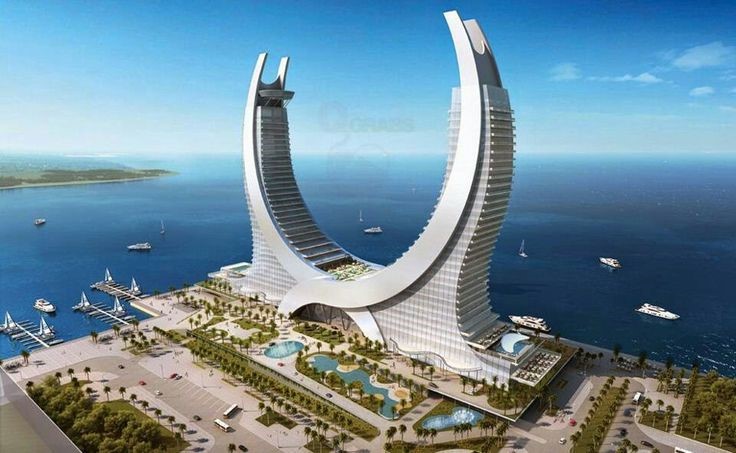Why are $1 billion megaprojects the biggest thing around?
As the world's population grows, so does the need for enormous projects
Thomas Frey //June 15, 2016//


Why are $1 billion megaprojects the biggest thing around?
As the world's population grows, so does the need for enormous projects
Thomas Frey //June 15, 2016//
Gone are the days where people are impressed by projects costing $10 million to $50 million or even $100 million. We are witnessing an explosion in the number of $1 billion-plus projects with some exceeding $100 billion, such as the artificial archipelago being built in Azerbaijan, Turkey’s massive urban renewal project in Istanbul and the new construction of Masjid Al Haram in Saudi Arabia.
But even these are merely scratching the surface of the extreme megaproject growth that will happen over the next decade, and there are several important reasons why this is happening.
First, we’re seeing a shift in power towards megacities. As people relocate from rural to urban communities and population clusters grow, so does the demand for major infrastructure improvements to help manage the traffic, water, sewage, power, and living strains of these growing economies.
Second, the wages paid for workers building infrastructure projects will improve the local economy to a point where other megaprojects become viable.
Third, as global awareness improves, so does the desire to standout and impress the rest of the world. Megaprojects become a source of national pride and a status symbol for emerging economies.
Fourth, we are moving into an era of technological unemployment where jobs are automated out of existence at an unprecedented level. The demand for new jobs – and these will provide tons of new jobs – will trump most other arguments.
And finally, megaprojects have a way of collateralizing themselves through the sheer size and impact of the project. Even though many will be based on un-provable claims and flawed accounting, the spinoff economies alone will create an overpowering momentum to push them across the finish line.
The growing list of megaprojects include tunnels, bridges, dams, highways, airports, hospitals, skyscrapers, cruise ships, wind farms, offshore oil and gas rigs, aluminum smelters, communications systems, Olympic Games, aerospace missions, particle accelerators, entire new cities and much more.
In spite of their problems, here’s why the megaproject list will continue to grow and will continue to define the cities and megacities of our future.

$45 billion Lusail City – Qatar’s largest real estate project, will be home to 200,000 with a scheduled completion date of 2019
Understanding the Value of Megaprojects
According to Global Strategist, Parag Khanna, we are becoming a globally networked civilization because that is exactly what we’re building. All of the world's defense budgets and military spending taken together total just under $2 trillion per year, but our global infrastructure spending is projected to rise from $3 trillion to $9 trillion per year over the coming decade.
“We have been living off an infrastructure stock meant for a world population of three billion, as our population grows towards nine billion," Khanna says. “As a rule of thumb, we should spend about $1 trillion dollars on basic infrastructure for every 1 billion people on the planet.”
It’s no surprise that Asia has taken the lead. In 2015, China announced the creation of the Asian Infrastructure Investment Bank, which together with a network of other organizations aims to construct a network of iron, silk, and digital roads, stretching from Shanghai to London.
And as all of these megaprojects unfold, we will likely spend more on infrastructure in the next 40 years, than we have in the past 4,000 years.
Examples of this are easy to find. Ten of the world’s most impressive megaprojects currently in the queue include:
- Dubai World Central Airport (United Arab Emirates)
- Songdo International Business District (South Korea)
- Tokyo-Osaka Maglev Train (Japan)
- Masdar City (United Arab Emirates)
- The Grand Canal (Nicaragua)
- National Trunk Highway System (China)
- International Thermonuclear Experimental Reactor [ITER] – Fusion (France)
- World’s Tallest Building (Azerbaijan)
- Delhi-Mumbai Industrial Corridor (India)
- King Abdullah Economic City (Saudi Arabia).
According to Bent Flyvbjerg, a management professor at the University of Oxford’s Saïd Business School, megaprojects currently constitute 8 percent of global GDP (gross domestic product).
Even though nine out of 10 megaprojects experience cost overruns, and most take far longer to build than expected, they represent a crucial piece of today’s global economy.
Flyvbjerg also noted that project leaders have an incentive to overstate income, underestimate costs and exaggerate future social and economic benefits due to lack of accountability and risk-sharing mechanisms.
But even though things go wrong, people generally don’t care. They don’t care about the poorly calculated cost-benefit statements, squandered money along the way, or the political wrangling necessary to get the green light; they just want something significant to happen in their community.
The benefits of megaprojects can be boiled down to these six points:
- Technological Inspiration. Most megaprojects are technically inspiring. Engineers and technologists develop great enthusiasm for working on large and innovative projects, pushing the boundaries for what technology can do.
- Source of Jobs. With so many jobs being automated out of existence, megaprojects serve as a catalyst for both the unemployed and the under employed.
- Political Accomplishment. Politicians need something they can point to with a sense of pride and accomplishment.
- Economic Benefits. Business people, trade unions, and workers alike will all reap the rewards from megaprojects.
- Community Pride. Everyone loves to tell stories about the big things their community accomplished.
- Aesthetic Beauty. Most people appreciate good design when it comes to building, using, and looking at something very large that is also ironically beautiful.
As a rule of thumb, history books don’t spend time memorializing the critics and project-killers — only those who succeed.
Up next: 64 Next-Generation Megaprojects
























